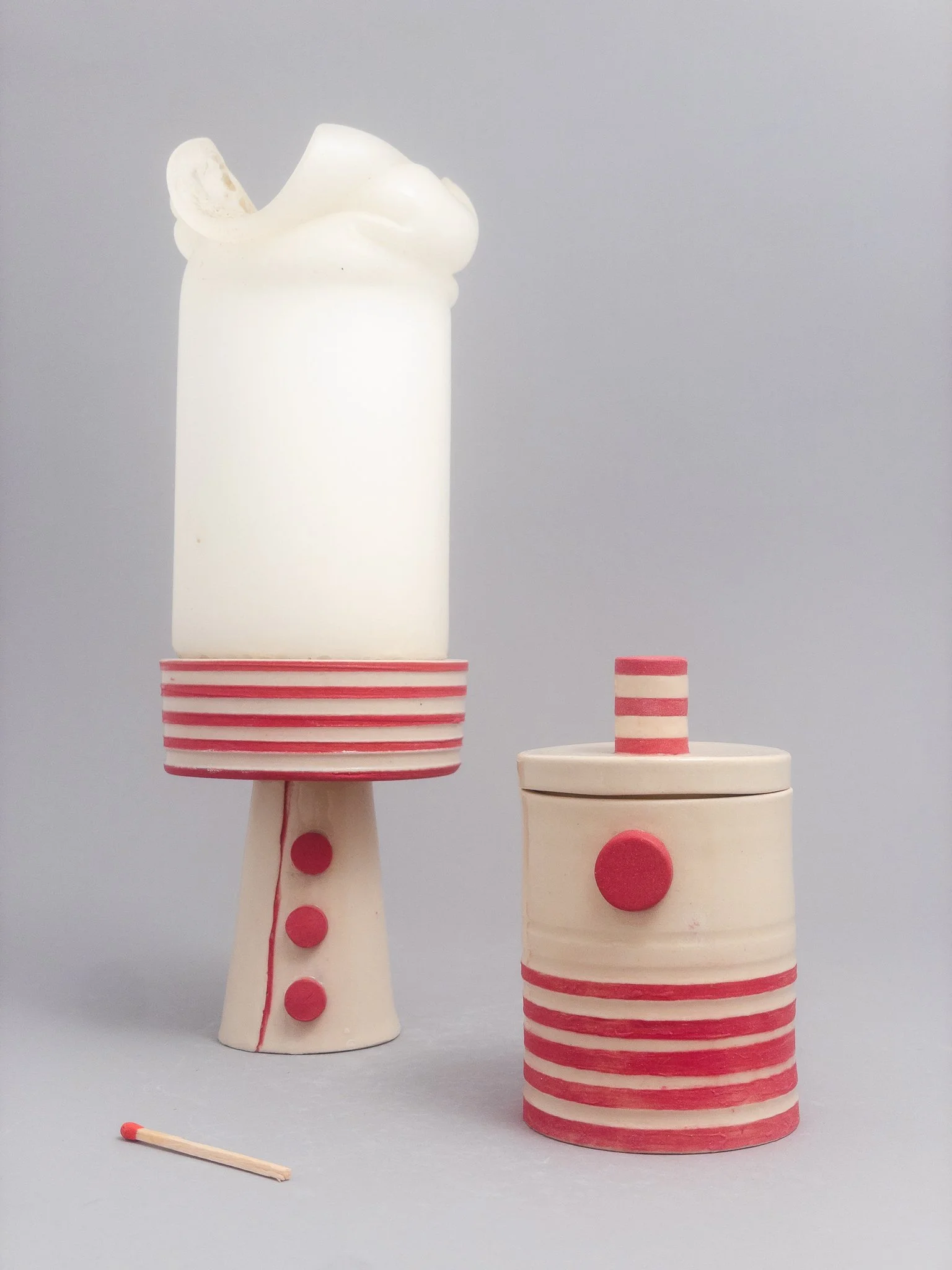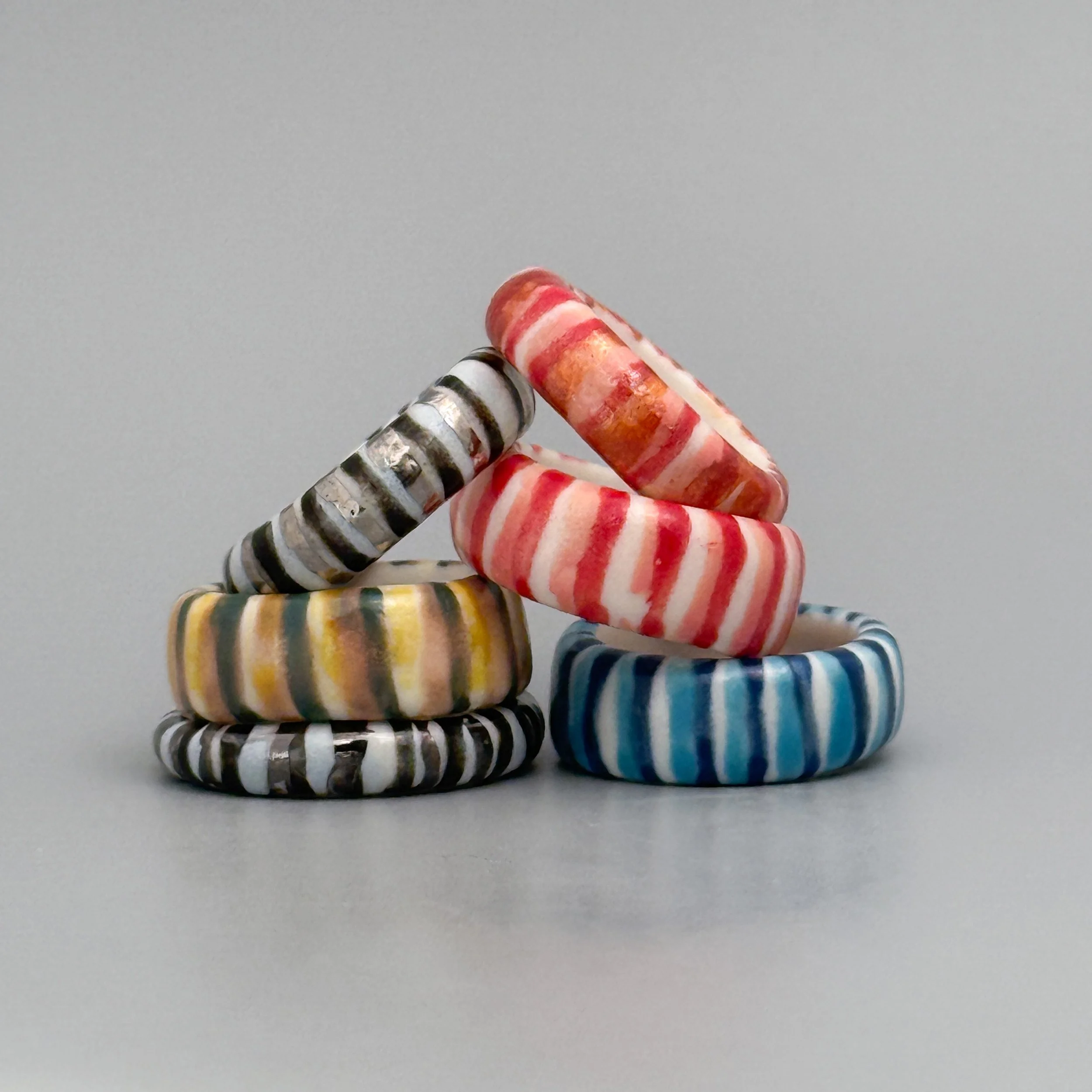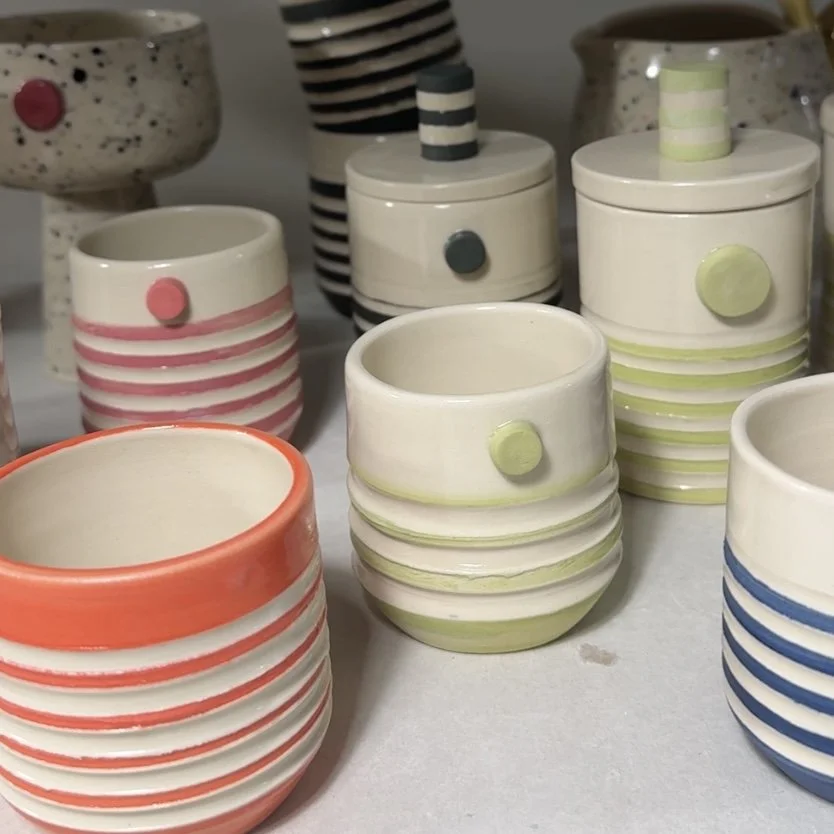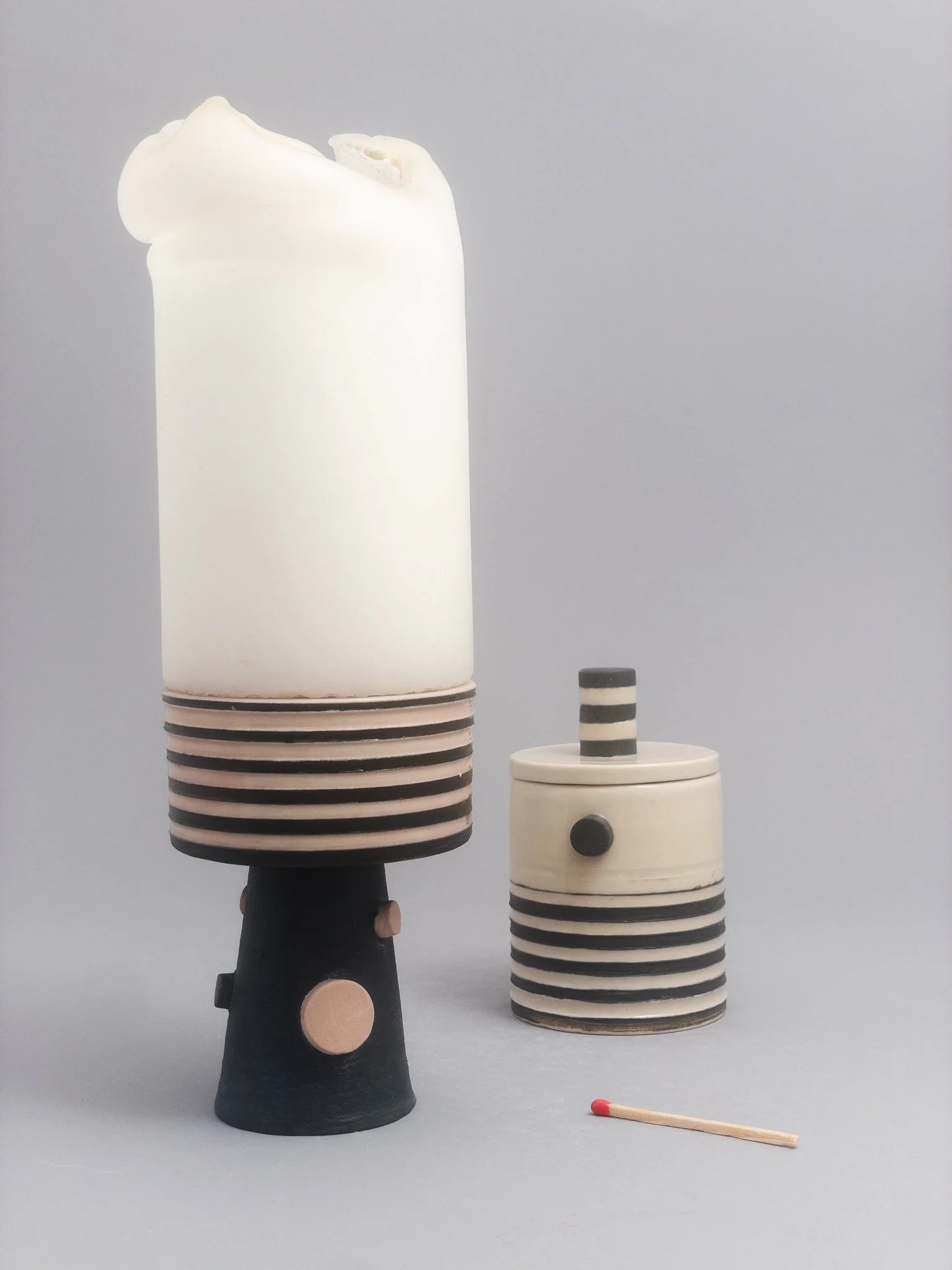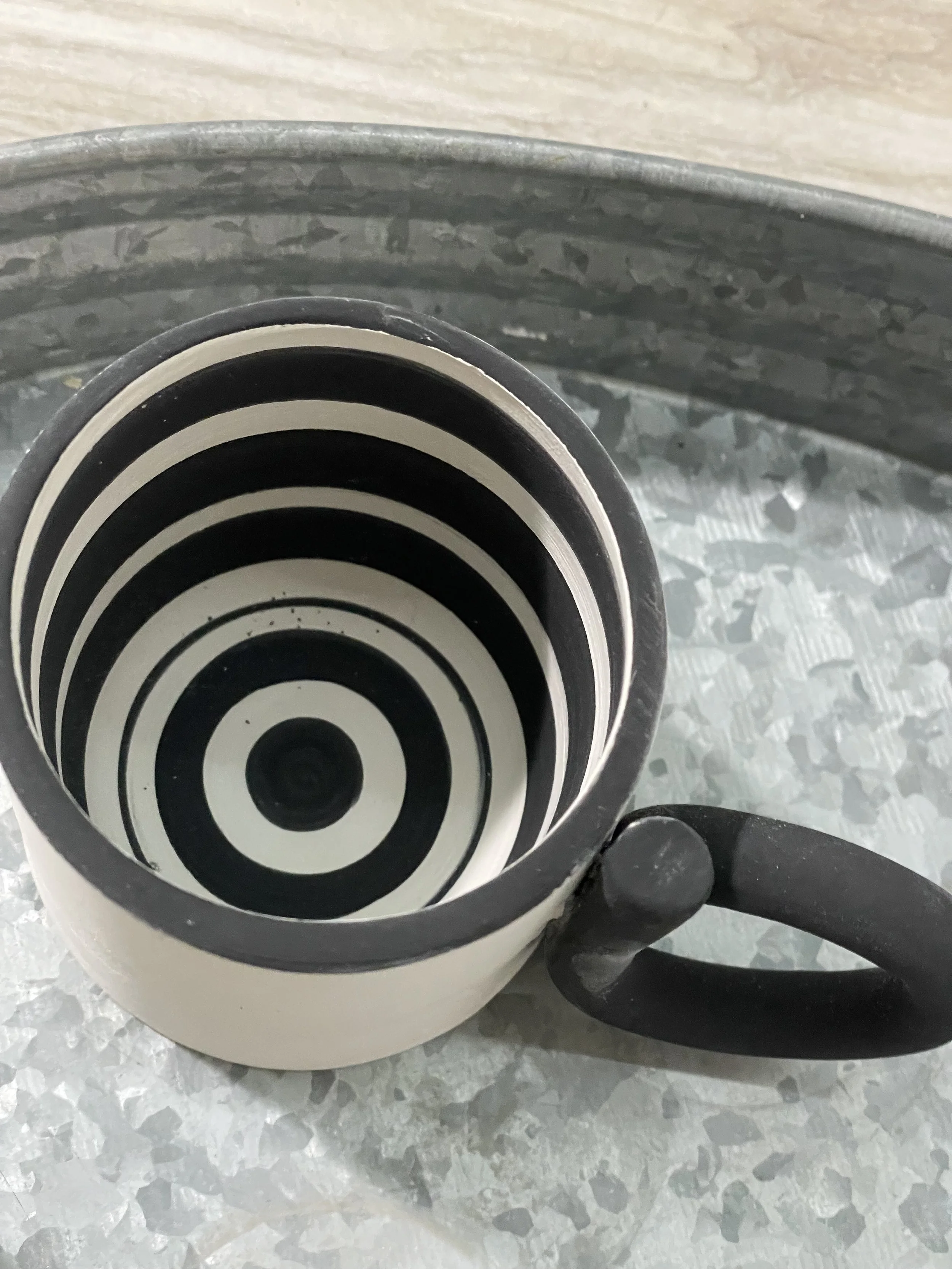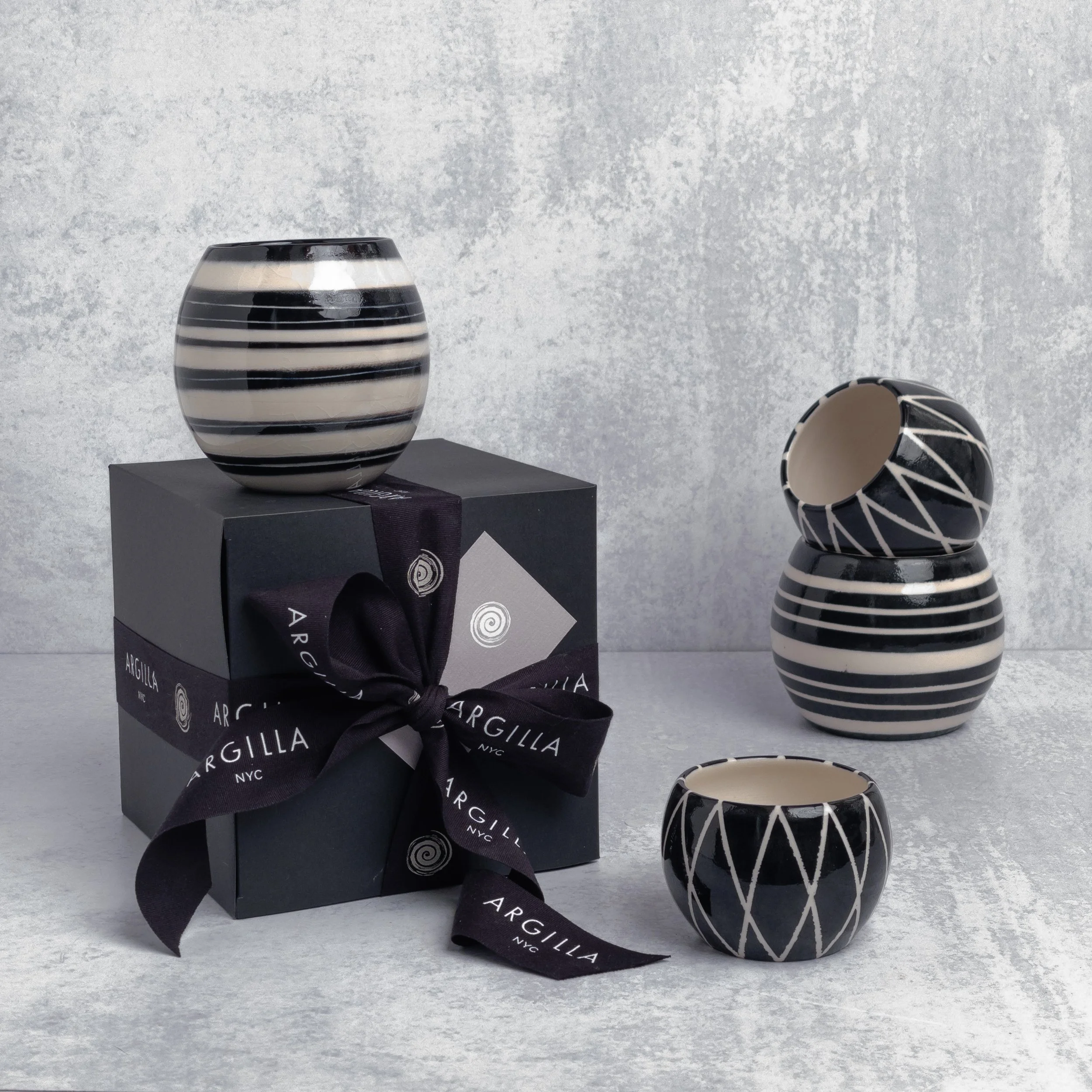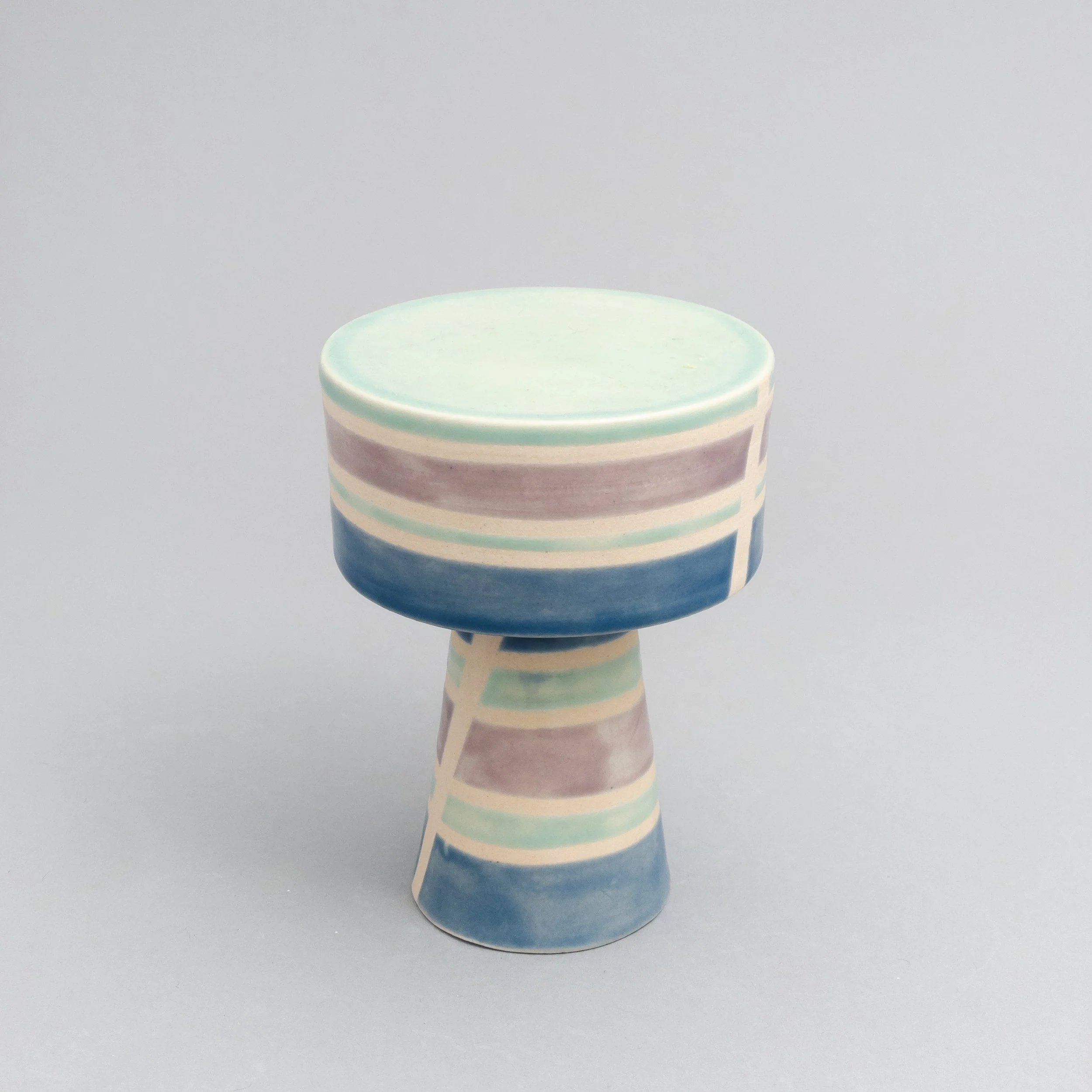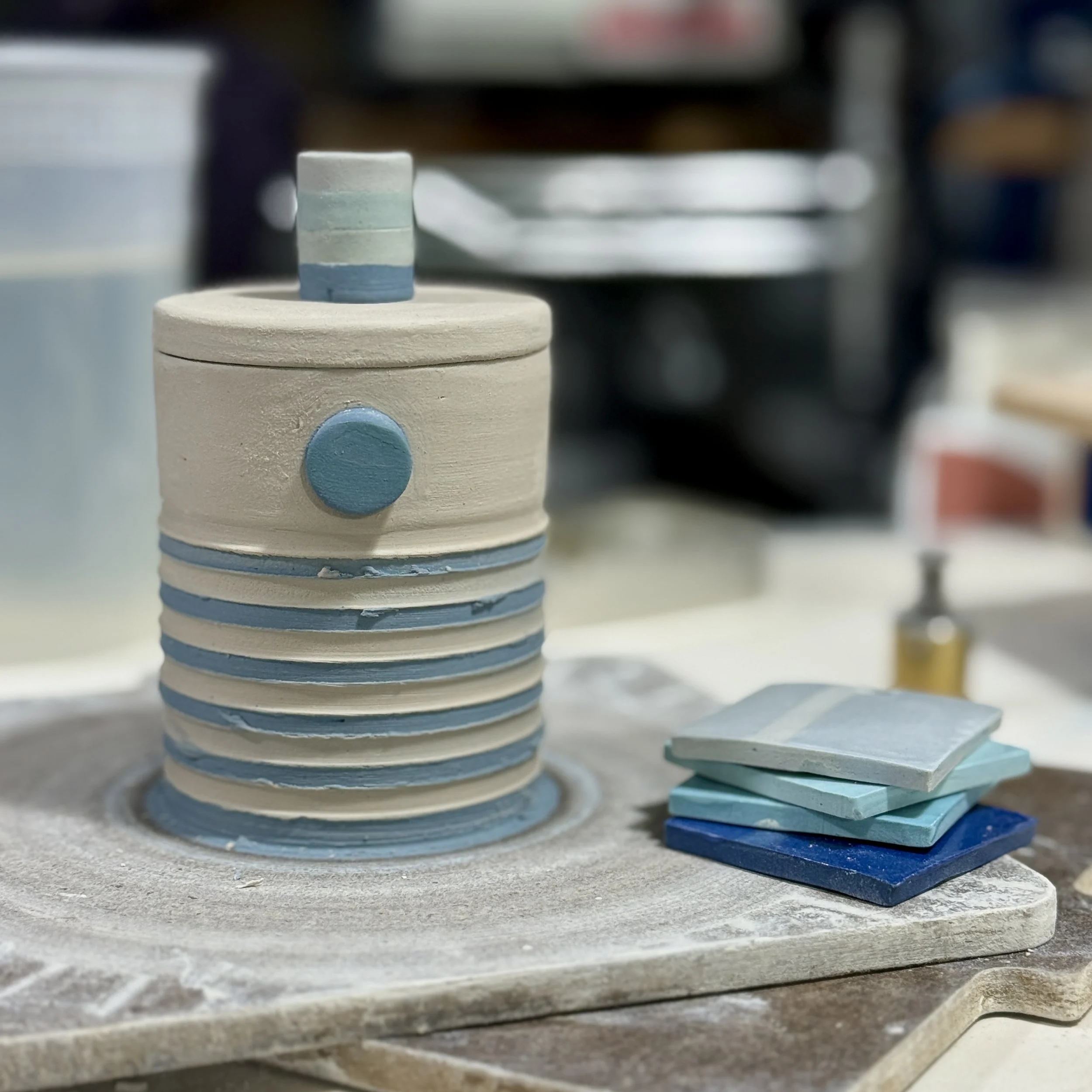Why Stripes?
This summer, in the middle of an accidental pause (my wheel had just broken) I found myself returning to a quiet obsession I’ve had for years: stripes.
I’ve always loved them. On clothes, yes, but also on vessels, paper, towels, candy wrappers. I own several Saint James shirts, the classic Bretons ones with boat necks and horizontal lines, and they’ve become something of a summer uniform. I’m drawn to stripes in almost everything, without really knowing why.
That changed when I read The Devil’s Cloth by Michel Pastoureau.
The book traces the history of stripes and how their meaning has shifted over time. In medieval Europe, stripes were seen as suspicious. They marked outsiders: prisoners, jesters, prostitutes, heretics. Striped garments were chaotic, disruptive, visually and socially. Only much later, in the 18th and 19th centuries, did stripes reappear in more innocent contexts: children's clothing, mattress ticking, sailor uniforms. It was the association with sailors that helped rehabilitate stripes entirely. They became nautical, summery, even clean. They became French. And finally, I understood why I associate stripes with the sea.
Pastoureau’s book gave language to something I was already sensing in the studio. Stripes carry structure and rebellion at once. They impose rhythm, divide space. They resist vanishing. A solid color disappears into form. A stripe declares itself. And yet stripes also invite play. They can waver, shift, wrap around curves, misalign slightly and still hold their identity. Stripes make structure visible. They guide the eye. They repeat, but never quite the same way. They carry tension, between order and variation, clarity and distortion, surface and shape.
In the studio, it started unintentionally. I first painted stripes on thrown vessels as surface decoration. Then I started carving them, especially on cupcake stands, without realizing why the combination felt so joyful. Stripes, I’ve come to realize, let me break up form and bring life to the surface. They suggest movement, play, and balance. This kind of carving introduced a new kind of interruption, not just visual but physical, embedded directly into the clay. Something you feel in the hand as much as you see with the eye. Later, I learned that in the 18th and 19th centuries, stripes began appearing on baby clothes, where they symbolized innocence, order, and early belonging. That history added a quiet layer of meaning, but in the studio, it’s the rhythm and tactility that keep pulling me back.
From there, stripes made their way into match strikers (where they’re functional too, providing a raised texture to help strike a match), rings (where vertical lines disrupt the logic of a circular form), and most recently, espresso cups and bowls.
On thrown pieces, I love how stripes interact with the wheel's momentum. Whether painted or carved, the stripe is born from contrast. Your tool stands still, the clay spins, and the line emerges. It’s deeply satisfying.
Stripes let me interrupt form without cluttering it. They add rhythm and structure, with room for variation—different colors, different depths, different finishes. Even small mistakes become part of their energy that make pieces feel alive. Once, I experimented with cuerda seca, a wax-resist technique that gave the stripes a stained, almost outlined quality. I liked the results, I'm not sure why I stopped.
Reading The Devil’s Cloth didn’t just give me historical context. It helped me understand my own visual impulses. Why I keep returning to this simple, repeating gesture, and how, by tracing its cultural weight, I can be more deliberate with it going forward.
Stripes have been misunderstood for centuries. Maybe that’s part of their charm. They can be bold or quiet, serious or silly. They can anchor or disrupt. But they never try to disappear.
And I like that about them.



